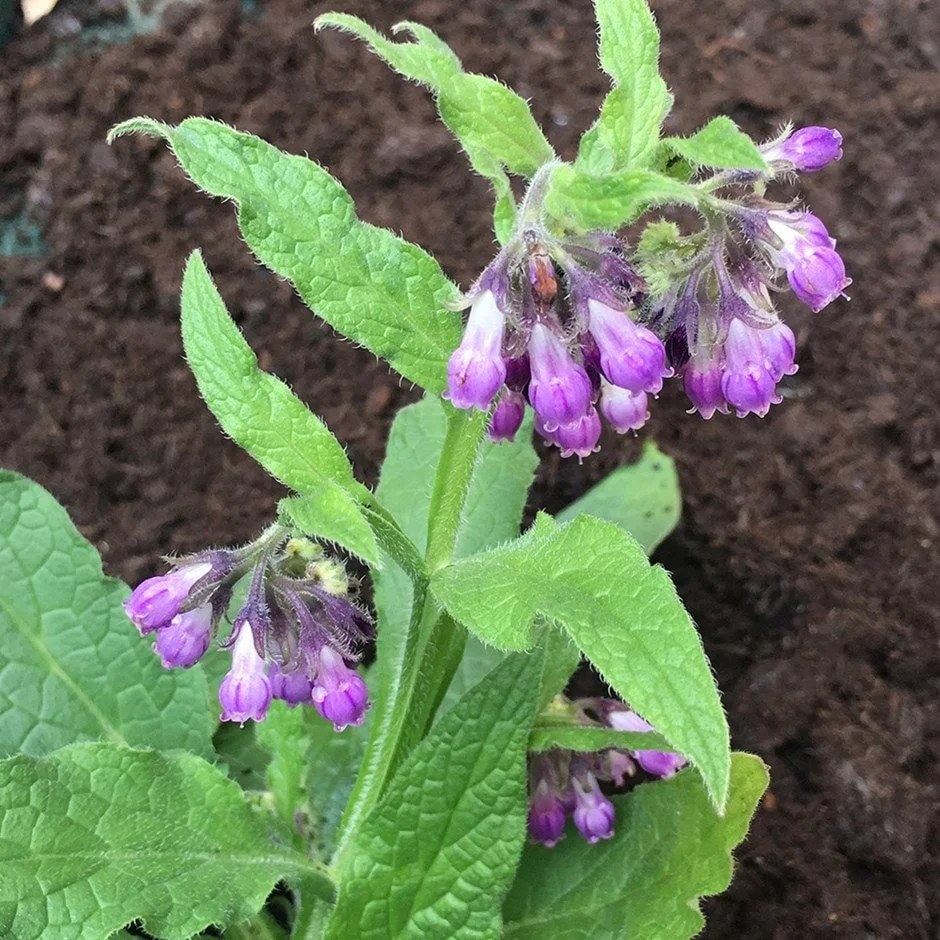Comfrey
Comfrey, Symphytum officinale, is a member of the borage family and the pollinators love the purple flowers. This is a herb that you need to plant it where you would like it because it so hard to eradicate once established. I once gave a friend a pea-sized piece of root and it grew into a thriving plant.
There is often a lot of confusion about ID with comfrey, especially before they flower. People who are not particularly savvy with plants seem to have difficulty distinguishing this from other plants. When in doubt leave it be. It may often be confused with borage except comfrey is a perennial and lack the starry blue flowers and erect growth. Another plant people may mix it up with is foxglove, Digitalis purpurea. Foxglove has larger usually purple flowers on a spike and is very toxic and it is also not perennial.
Comfrey has also been associated with liver toxicity, so it is best used safely externally.
In the garden the leaves accelerate compost breaking down, can be laid in a trench before planting potatoes or tomatoes, can be made into a tea and diluted and put on plants. It is mineral rich due to those tenacious roots with bring up nutrients into the leaves. Fruit trees thrive with it planted underneath them.
Externally it is can be used for up to 6 weeks on unbroken skin for sprains and strains as an ointment (from the root) or poultice. It has not been studied much so there is very little clinical evidence of its efficacy.
As always, consult your naturopath or medical herbalist before using and use this only topically. Avoid if pregnant or lactating.
Comfrey, Symphytum officinale.

